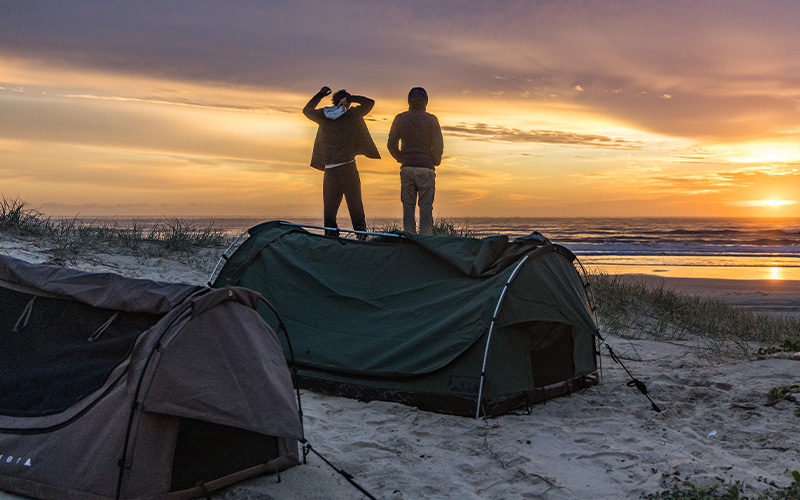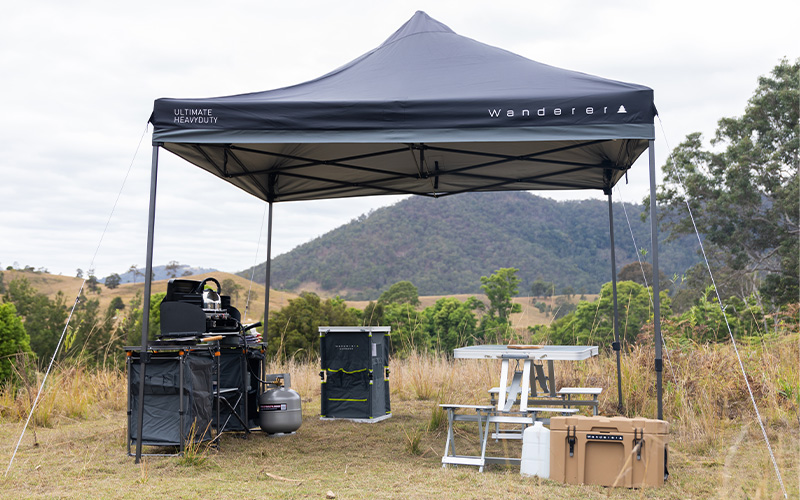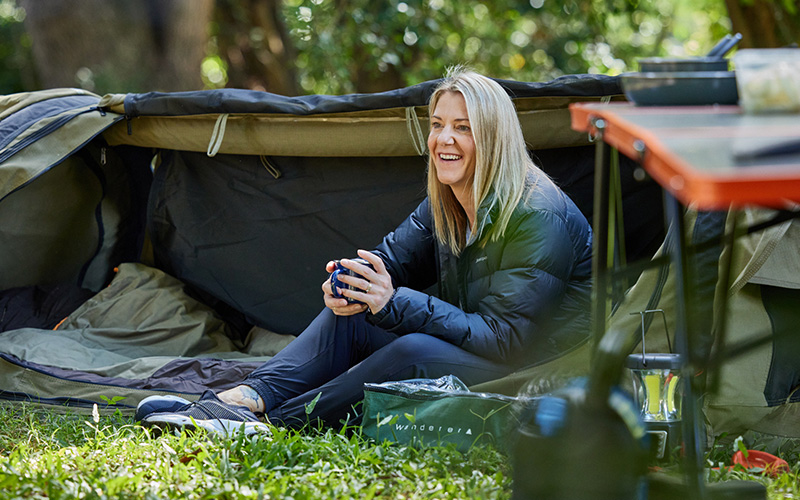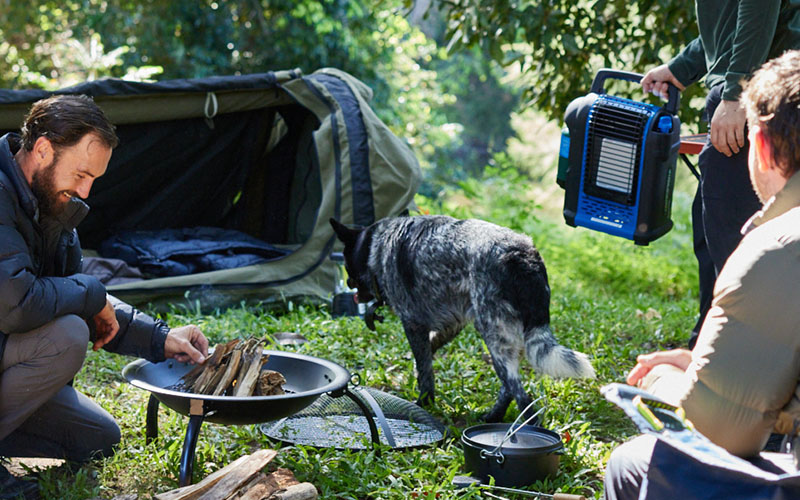Australia may be recognised worldwide for its coastal beaches and balmy summer days, but that's not all we have to offer down under! For a completely different outlook on this beautiful country, many have found winter camping to be an experience like no other. During the winter months, the colder climate influences the landscape and animal life you encounter, and will also affect the activities you take part in. To point you in the right direction, the BCFing experts have decided to share with you some tips and tricks sure to make your next winter campout a cracker!
Be prepared for your winter camping trip
Preparation is the key when camping, no matter the time of year it’s always helpful to have a checklist of items to ensure nothing is forgotten. During the winter months, the importance of having the correct gear is escalated and will help ensure your winter camping trip is an enjoyable one. Check out our camping checklist here.

What is the best tent or swag?
With more choices than you can poke a tent peg at, you'll have no dramas finding the perfect tent or swag at BCF! Easily one of the most important choices you must make when winter camping is picking a tent or swag that will ensure you have a comfortable night's sleep. The need for a good bit of shut-eye when temperatures are a few degrees cooler can't be understated. Many campers are under the impression that one tent will see you through all year round, but beware – the same ventilation that keeps you cool during summer can turn you into an icicle in winter! Having a tent or swag that is designed to keep the warmth in and cold air out is going to provide you more comfort during those colder months.
The most important thing to consider is how much space you'll have at your camp and how much room you have to transport your gear. If you're planning an overnight hiking trip, a small compact tent that fits in your pack will be most suitable. On the other hand, if you're taking the family and can drive straight up to your site, a bigger family tent or individual swags will provide the most comfort.
Expert tip
Look for materials such as canvas, cotton, or fully sealed polyester to keep you toasty on a cold night.
What kind of sleeping bag do I need?
During winter you'll want a sleeping bag that's rugged, comfortable, and most importantly, warm. As they come in such a variety of sizes, shapes, temperatures, and filling options it can be quite confusing to choose one. Luckily most outdoor sleeping bags come with both temperature and comfort ratings that make it easy to pick the correct bag, depending on your individual needs. When camping in colder climates a sleeping bag filled with either goose or duck down is a perfect choice, with its superior warmth to weight ratio and easy compact design that will handle the coldest of winter nights. There are plenty of synthetic alternatives on the market that come at a more affordable price and can still hold their own when it comes to keeping you warm. The main drawback of synthetics is that its size and weight will never compete with a down bag. If you need a hand with choosing the right sleeping bag, take a geez at our sleeping bag buyer's guide here.
Expert tip
Adding a sleeping bag liner to your sleeping setup is another way to gain warmth without creating extra bulk.
Should you use a sleeping mat?
During winter, nights in the bush can be mighty uncomfortable without some form of a camping mat to sleep on. They provide a barrier between you and the cold tent floor, plus add a level of comfort for a better night's sleep. Mats are available in multiple sizes including single, king single, double, and queen to fit your desired tent or swag and accommodate more people. There are plenty of quality brands offering different inflation options, from self-inflating to air mattresses.
Expert tip
For further heat retention and comfort, try using 2 mats simultaneously. The space between layers will trap even more warm air.

Should you use a gazebo or tarp?
Gazebos and tarps are two popular forms of shelter that are used to protect your camp and help combat the elements. Tarpaulins or "tarps" for short have been an essential item that campers of all experience levels have used for decades. They are inexpensive and come in a range of configurations that are used in conjunction with tent poles, tent pegs, and guy ropes to hold them taut.
Gazebos have quickly gained a reputation for being a must-have camping accessory that is simple to erect and can be used for a myriad of purposes. Available in a range of sizes from the compact 3x3 metre perfect for any winter camp through to the larger 6x3 metre that can fit over the top of most family tents. For additional protection, consider adding on wall kits or hub units to make your winter camping experience even more enjoyable.

What clothing is best for camping this winter?
Having the correct clothing is a must when winter camping! So, make sure you have all your layering options covered to ensure that you stay comfortable no matter the temperature. The clothes you bring can make or break your camping experience so it's important to layer your clothing correctly.
Base-layer
The base layer, or thermal layer as it’s commonly known, is used to regulate the body's temperature. They can be effective in all climates, as not only will they help you stay warmer in winter, but also keep you cooler in summer. Hugging tightly to the body, thermals will wick away sweat and moisture to leave you feeling both comfortable and dry. Base layers are available in both merino and polypropylene fabrics to suit the needs of any camper.
Expert tip
Choosing between merino and poly thermals can be tricky, as they both have their own benefits. Merino is the better of the two for temperature regulating and comes with natural anti-bacterial properties that allow them to be worn for multiple days. Poly thermals are lightweight and breathable plus won’t burn a hole in your back pocket.
Mid-layer
Acting as the major insulator in the line-up, the mid-layer retains the most body heat while still being remarkably breathable. Mid layers are most commonly constructed from either fleece or wool and do a superb job of trapping body warmth. Sitting comfortably between the thermal and outer layers, it provides warmth without excess weight.
Outer-layer
The outer layer provides sufficient protection from the elements and is ultimately a spray or rain jacket. Commonly treated with some form of waterproofing agent which makes water bead and fall from the garment. The first line of defence for ensuring your base and mid-layer remain dry, which in turn will help you stay warm on your next winter camping trip.
For all your layering needs under the one roof, BCF and Macpac are a match made in heaven. Check out the full range here.
Choosing the correct location when winter camping
Choosing the correct location when setting up your tent is a must. No matter the season, taking careful consideration of where you park yourself can make the difference between the trip of a lifetime or having a shocker. During winter you want a position that takes full advantage of the sun's heat. As the days are shorter and temperatures lower, it pays to seek out camping spots that are open and sunny but stay mindful of the wind.

Can I have a campfire at my campground?
Sitting back and relaxing by the campfire on a winter’s night is something that many campers dream about. Toasting marshmallows or even a camp oven cook-up are all part of the experience. It’s important to check the fire restrictions in your local area or campsite to ensure you abide by the rules. Where campfires are not permitted, BCF stock a range of portable heaters that will keep you toasty. For a few sneaky hacks on starting a fire, let our very own Sammy Hitzke show you how it’s done here.
Protecting your electrical devices and camp lighting during winter
Camping in the winter months can put added pressure on your batteries and electrical devices. Take a squiz at Sammy’s tips and tricks on how to get the most out of your gadgets and prevent cold weather damage.
So there you have it – there’s no need to sit around all year waiting for your summer camping trip! With a bit of planning and preparation, you can be out there enjoying everything the cooler months have to offer in style and comfort. So what are you waiting for? See you out there.

